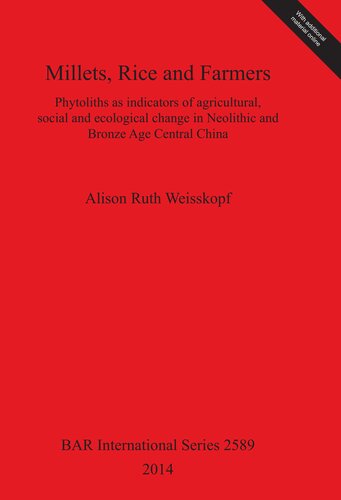

Most ebook files are in PDF format, so you can easily read them using various software such as Foxit Reader or directly on the Google Chrome browser.
Some ebook files are released by publishers in other formats such as .awz, .mobi, .epub, .fb2, etc. You may need to install specific software to read these formats on mobile/PC, such as Calibre.
Please read the tutorial at this link: https://ebookbell.com/faq
We offer FREE conversion to the popular formats you request; however, this may take some time. Therefore, right after payment, please email us, and we will try to provide the service as quickly as possible.
For some exceptional file formats or broken links (if any), please refrain from opening any disputes. Instead, email us first, and we will try to assist within a maximum of 6 hours.
EbookBell Team

5.0
70 reviewsLate Neolithic and Early Bronze Age Central China was the scene of important cultural developments which impacted on agricultural practices and local vegetation. Using phytolith data from archaeological sites in Henan, this study investigates changing crop choices, from broomcorn millet to foxtail millet to rice. Crop processing stages were interpreted by examination of differing proportions of phytoliths from crop husks, weed husks and crop and weed leaves to illustrate cultivation systems, harvesting and processing methods. The results suggest more successful agricultural practices and possible changes in social organisation in the Late Neolithic. Phytolith data was also used to understand impacts of these changes on local vegetation.